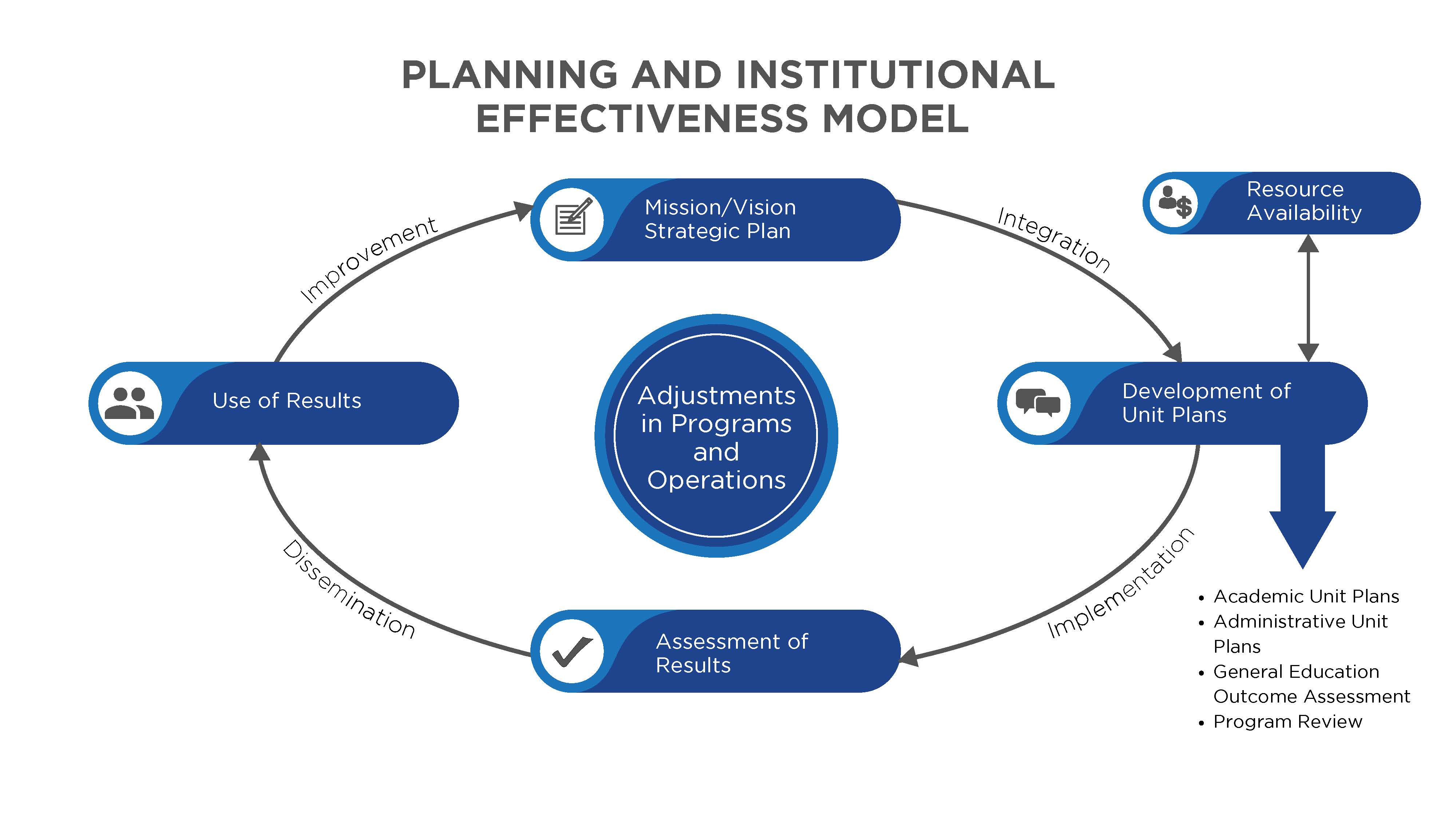Planning and Assessment
Institutional effectiveness at Lamar Institute of Technology (LIT) is an ongoing, comprehensive, and data-driven process through which LIT’s divisions, academic programs, and administrative units gather, analyze, and use data to ascertain how well the college is accomplishing its mission and goals. Assessment results are analyzed and evaluated to make continuous improvements throughout the institution.
LIT’s mission, core values, and strategic goals are instrumental to institutional effectiveness at the college. The institutional effectiveness process is designed to demonstrate how LIT’s key priorities—its mission, core values, and strategic goals—are met through strategic planning and evaluation of institutional and unit outcomes. LIT establishes mission-focused goals through its Strategic Plan; implements these goals; evaluates whether the college and its units are achieving these goals; and uses the results to make changes that improve LIT’s ability to meet its strategic goals. In turn, these changes are themselves implemented and evaluated for their effectiveness. What results is an integrated model in which each step supports and informs the next.
The Institutional Effectiveness Manual describes LIT’s planning and evaluation activities, which put into practice the institutional effectiveness model presented below. These activities are codified in LIT’s Institutional Planning Calendar created by the college to coordinate its planning and evaluation practices.

Annual Unit Planning
LIT administration, faculty, and staff engage in continuous planning and evaluation at all levels and across all units of the college. All LIT units (academic, student support, and administrative) develop an Annual Unit Plan or AUP that includes the following elements: Unit Purpose Statement, Unit Goals, Alignment with Institutional Planning (Strategic) Goals, Unit Objectives, Assessment Criteria, Results & Improvement Plan, and Budget Impact (refer to the IE Manual for more information).
At the start of an academic year, units fill in the AUP template, completing all sections except the Results and Improvement Plan. Units implement their plans and assess their objectives over the course of the year. As objectives are measured and analyzed throughout an academic year, units discover strengths and weaknesses and opportunities to build on success or make improvements and adjust their AUPs as they make these discoveries. At the end of an academic year, units report and analyze their results and form improvement plans that focus on strengthening their operations.
LIT's Annual Unit Planning Calendar details the planning process/cycle occurring on a continuous timeline. The Annual Unit Plan template and instructions on how to complete it are located in the IEA (Forms) network folder.
Annual Learning Outcomes Assessment
LIT faculty commit to academic excellence and continuous improvement by conducting annual achievement of Program Learning Outcomes (PLOs) and Student Learning Outcomes (SLOs) within their academic programs. PLOs are cumulative knowledge, skills, and competencies that students are expected to achieve upon program completion. SLOs are course-specific activities articulating what students will know, do, or value upon course completion. Assessment Maps illustrate the alignment of SLOs and PLOs across the curriculum.
Each year, the academic program identifies three to five PLOs and two to three SLOs per PLO to assess, rotating outcomes over a 3-year cycle or when achievement targets are met. Programs systematically collect assessment data throughout the year. IEA and a sub-committee of the Academic Quality Committee (AQC) review analyses and provide feedback to faculty to make meaningful improvements in their programs.
LIT's Annual Learning Outcomes Assessment Calendar details the assessment process/cycle occurring on a continuous timeline. The Assessment Map and the Annual Learning Outcomes Assessment templates and instructions on how to complete them are located in the IEA (Forms) network folder.